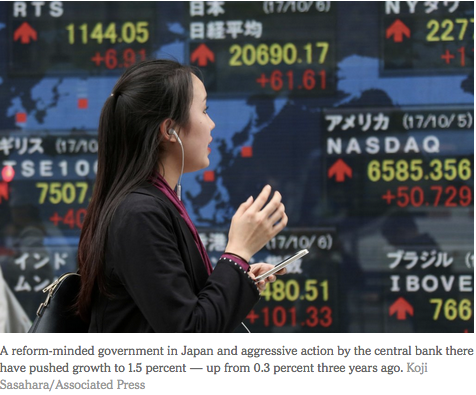For decades, the global economy has been defined by dissonance.
There has been the Japanese recession. The financial crises in the United States and Europe. And drama in emerging markets throughout.
But as central bankers, finance ministers and money managers descend on Washington this week for the fall meetings of the International Monetary Fund, they will confront an unusual reality: global markets and economies rising in unison.
Never mind political turmoil, populist uprisings and threats of nuclear war. From Wall Street to Washington, economists have been upgrading their forecasts for the global economy this year, with the consensus now pointing to an expansion of more than 3 percent — up noticeably from 2.6 percent in 2016.
Economists from the I.M.F. are likely to follow suit when the fund releases its biannual report on the global economy on Tuesday.
The rosy numbers are noteworthy. But what’s more startling is that virtually every major developed and emerging economy is growing simultaneously, the first time this has happened in 10 years.




